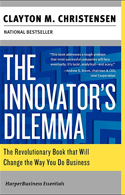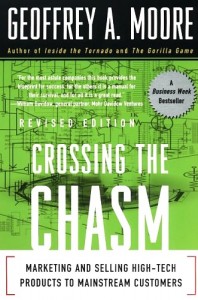 The Innovator’s Dilemma by Clayton M Christensen is one of the best business books I have ever read. It focuses on the practical aspects of innovation, with two key points (for me at least):
The Innovator’s Dilemma by Clayton M Christensen is one of the best business books I have ever read. It focuses on the practical aspects of innovation, with two key points (for me at least):
- You are most vulnerable when you are most profitable
- You need to create the start-up that undermines your most profitable products before someone else does
- New markets need simple, cheap products which hit a critical new requirement
This book is great inspiration for those seeking to become entrepreneurs, it shows practical examples of where start-ups have seized on opportunities and completely blind-sided the highly profitable incumbent. That’s the dream right? It also serves as a great warning to those in big business who feel chasing the margins instead of innovation is the path to success. It certainly puts forward a compelling argument, one that even NASA seems to think has merit.
Perhaps margins should be the guide for businesses, but they should work on a goal of an average margin across all their products instead. That way they can maintain a balance of high profitability mature businesses with low profitability emerging businesses. Of course this would need to be combined with some “profit margins must never decrease on a product” rule. Doing this without cannibalising your own offerings (by differentiating based on high end vs low end customers) however is a very fine line to tread.
The other practical reflection I had reading this book was on the Engineering vs Sales argument. Which side is better equipped to run a successful business? I am still yet to work anywhere that balances these two sides perfectly, it always seems to fall one way or the other. My thoughts after reading this book were that an emerging organisation needs to be run by the engineers (focus on product success, not profits or impossible projections) and mature businesses by sales people (focus on profits, finding upmarket customers).
What did you get out of this book?


